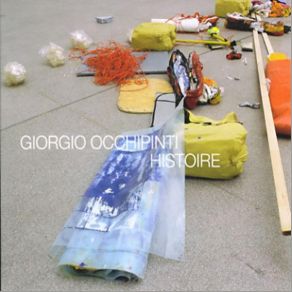Histoire
Download links and information about Histoire by Giorgio Occhipinti. This album was released in 2003 and it belongs to Jazz genres. It contains 3 tracks with total duration of 53:58 minutes.

|
|
|---|---|
| Artist: | Giorgio Occhipinti |
| Release date: | 2003 |
| Genre: | Jazz |
| Tracks: | 3 |
| Duration: | 53:58 |
| Buy it NOW at: | |
| Buy on iTunes $9.99 | |
| Buy on iTunes $10.99 | |
Tracks
[Edit]| No. | Title | Length |
|---|---|---|
| 1. | Cantata Perpetuelle et Hypnotique | 16:28 |
| 2. | Revolution | 18:11 |
| 3. | Histoire D'un Sicilien à Paris | 19:19 |
Details
[Edit]The problem with music that cannot be pigeonholed is that it tends to make people uncomfortable, something that might amuse Italian composer/pianist Giorgio Occhipinti, who as much as any other musician in recent memory obfuscates the border between classical music and jazz. The word "obfuscates" is probably on target when you consider how Occhipinti describes in his liner notes what he is trying to accomplish on his Histoire recording: "...Heterogeneous idioms and emanations of the creative cosmos filtered and subsumed into an exclusive code of my own, perpetually devoted to the screening of globality and circularity." Well, there are three pieces, each 15 to 20 minutes, and each utilizing the odd instrumentation of a string sextet, two clarinets, piano, and drums, often giving the group's sound a somewhat thin and airy timbre. There is a consistently bird-like tweeting, a result of the violins and clarinets, which cry out for complementary brass. Occhipinti proudly covers historical ground: at times he composes with an eye to the distant past, reflecting his love for "ancient music," but he also appreciates the present, and a piece such as "Revolution" combines some fine avant-garde piano improvisation with lengthy sections of chamber music that are subtly subverted. Little that is here is likely to grab you; a more common reaction might be to raise an eyebrow in wonder. It does not fit any categories easily, not even ones on the edges that self-consciously do not fit anywhere else. Perhaps it is quintessentially third stream, pointing to something entirely new. At times there is great density, at others a lightness of being. The improvisational element, while important, is not critical to the realization of the compositions, and it is often difficult to tell, other than for the piano and occasional clarinet solos, which parts are improvised. Sometimes sections seem to drag on too long, but there is a sense that much of it is sophisticated and often daring. There is enough to offend almost everyone: for the jazz-oriented it is likely to sound too "straight," much too "classical." For those coming from the orientation of classical music, it may not sound "serious" enough or as with some of Alfred Schnittke's marvelous "Symphony No. 1," naysayers might think it smacks of gimmickry. All of which, of course, makes it all the more seductive.